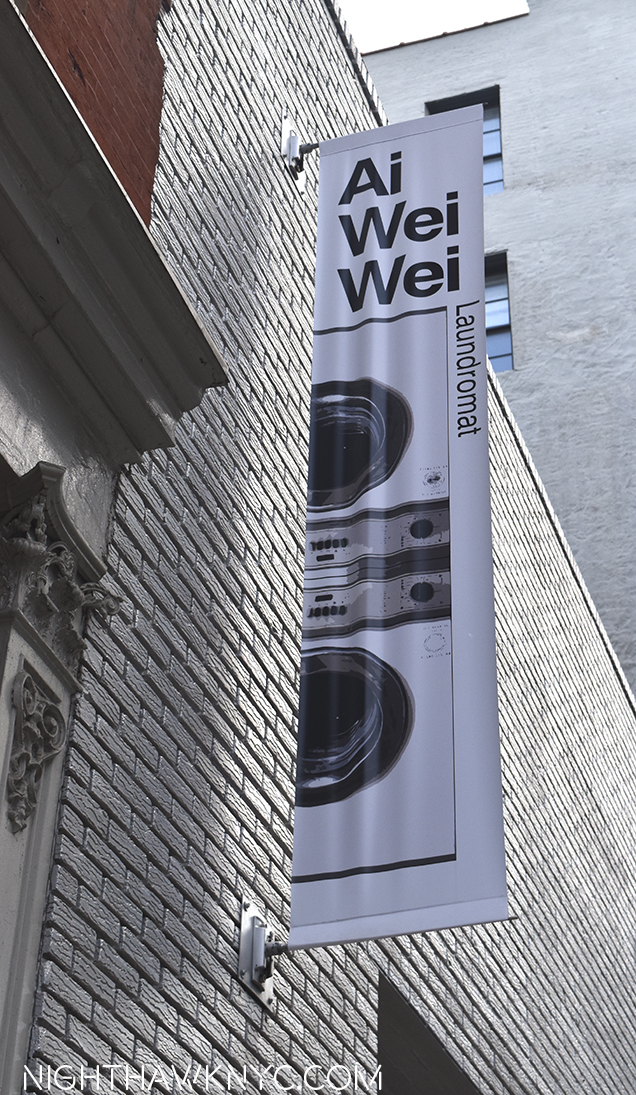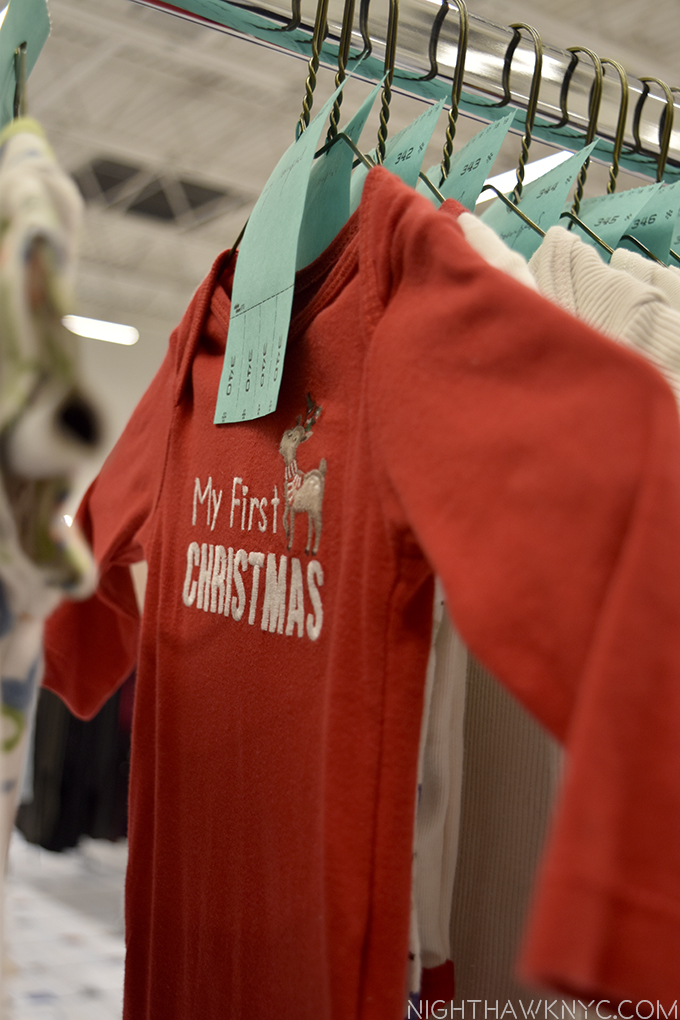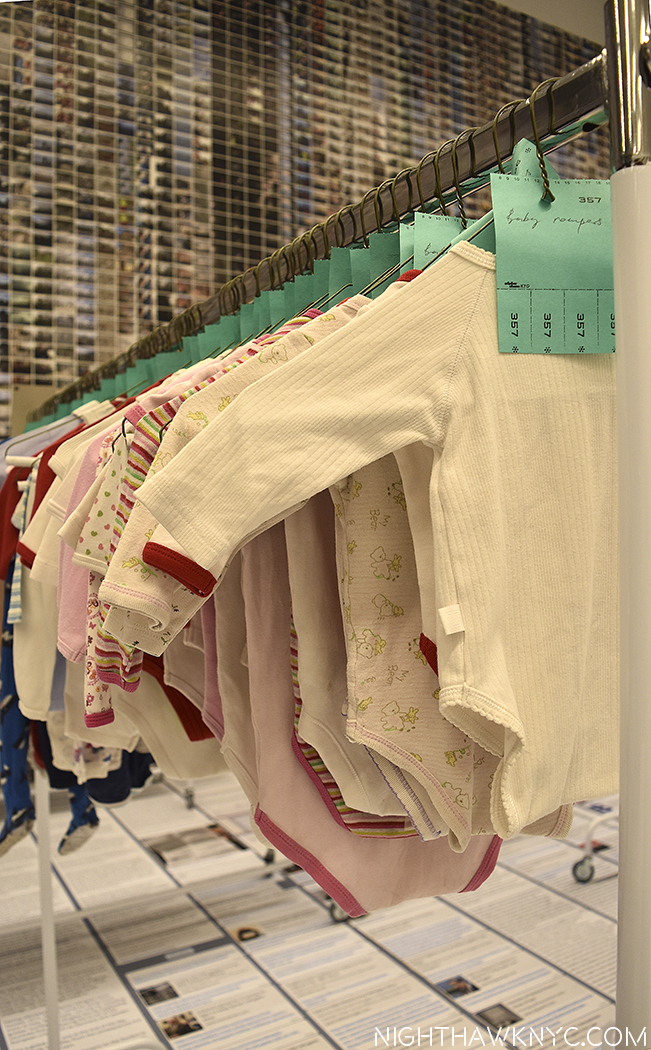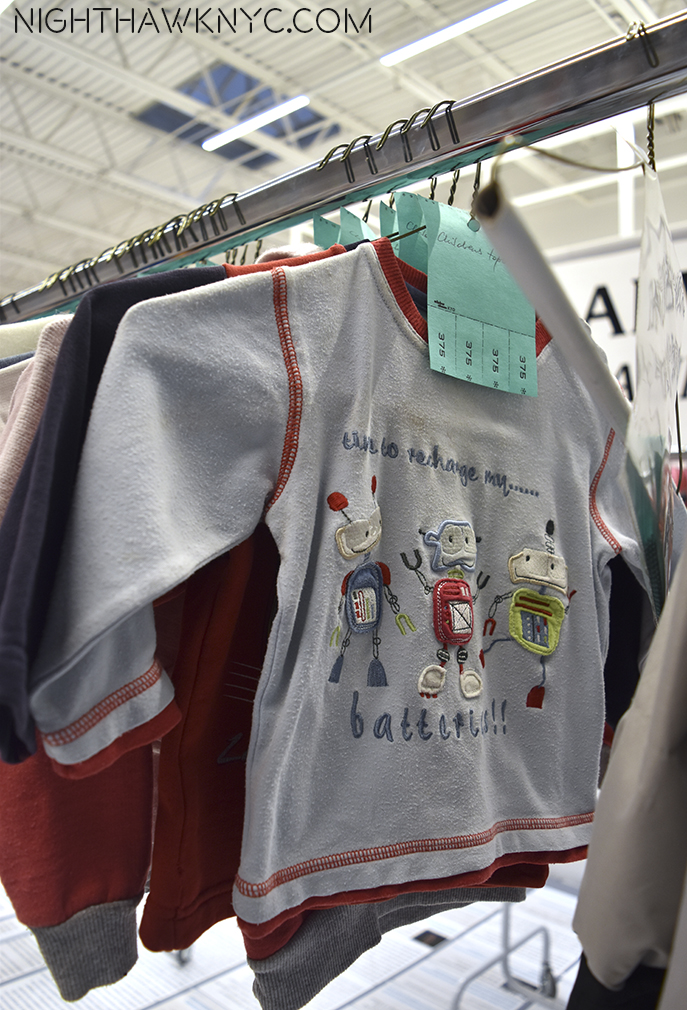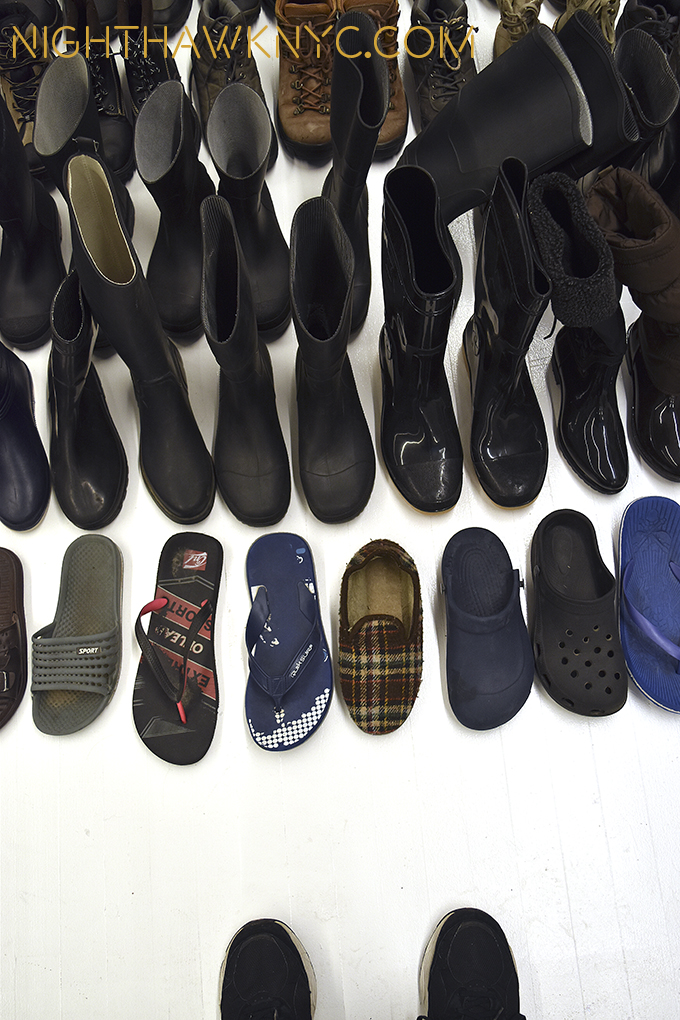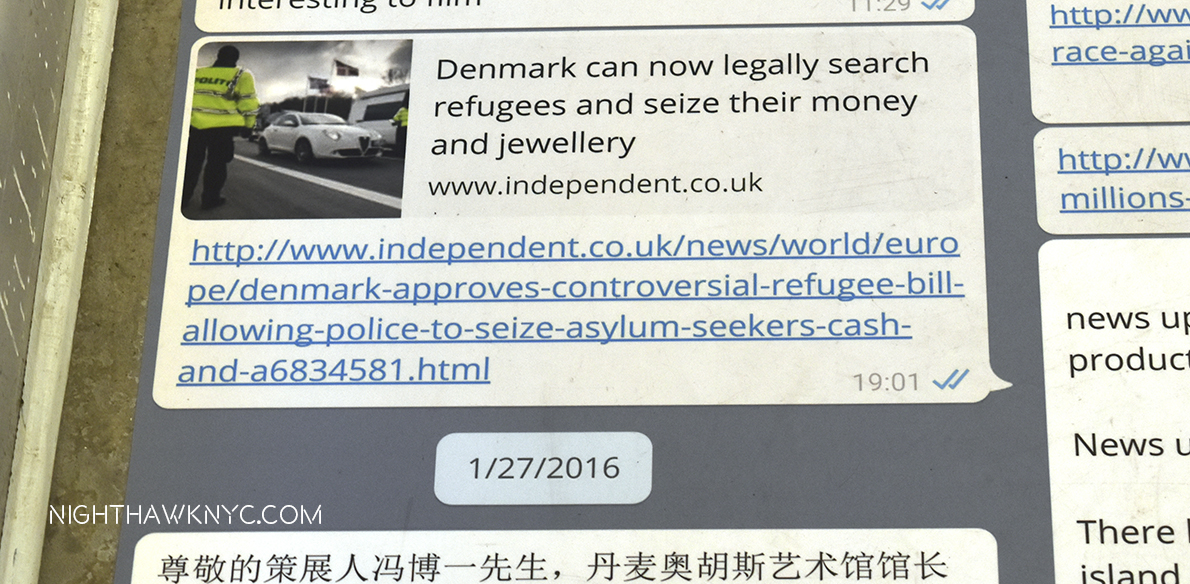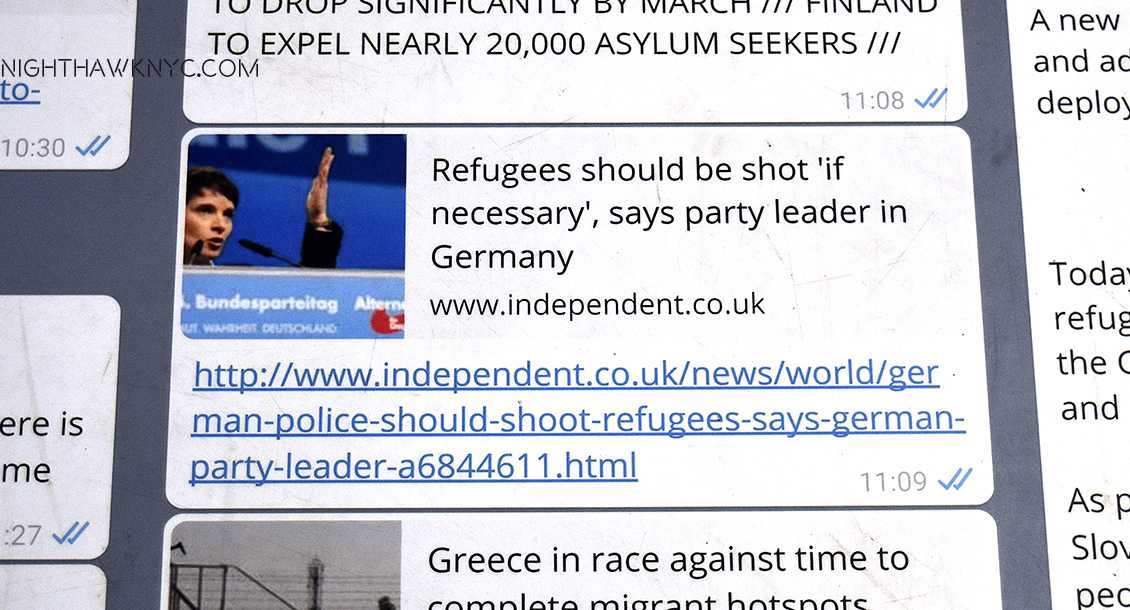Written & Photographed by Kenn Sava
Ai Weiwei returned to show his latest work in NYC for the first time since getting his passport back, making a splash to rival his last big show here (which he could not attend), the retrospective “Ai Weiwei: According To What?” (at the Brooklyn Museum in 2014), this time with no less than FOUR concurrent shows- one in Soho, two in Chelsea and one Uptown. With so much terrain to traverse, and with so much to see, it makes sense to adapt my approach to writing about them, so I’m going to cover the 4 shows over 2 Posts, as follows-
Ai Weiwei: 2016 Roots & Branches @Mary Boone Gallery, Chelsea
Ai Weiwei: 2016 Roots & Branches @Mary Boone Gallery, Uptown and
Ai Weiwei: 2016 Roots & Branches @Lisson Gallery, Chelsea in a second Post, here.
Ai Weiwei: Laundromat @Deitch Projects, Soho will be the subject of this one.
Ai Weiwei: Laundromat–
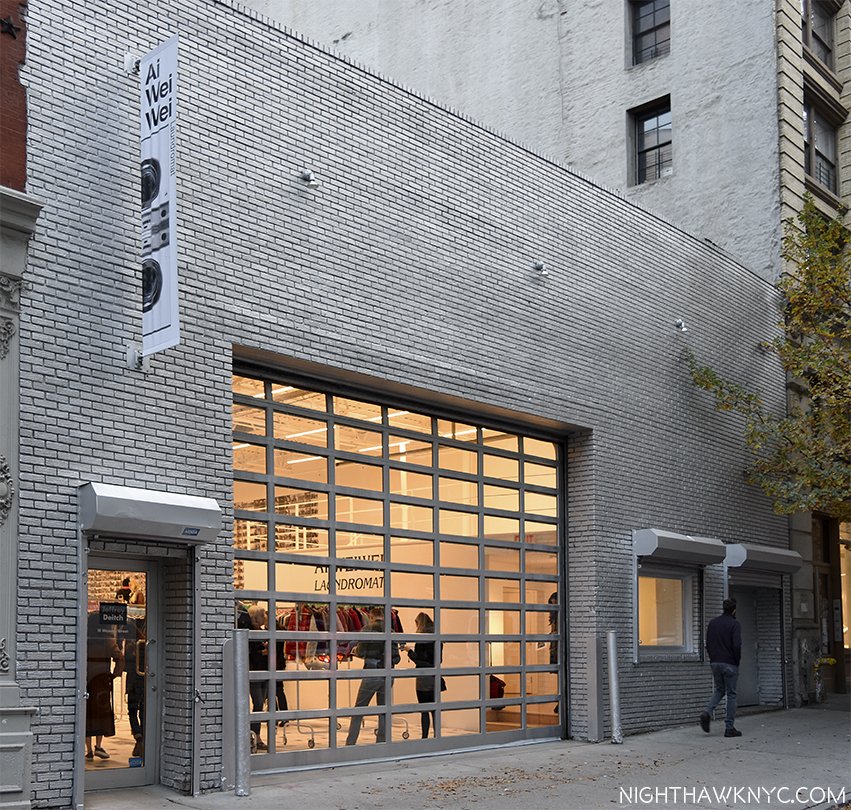
Deitch Projects. Also seen in this site’s Banner.
Of the 4 shows, the centerpiece has to be Laundromat at Deitch Projects, an unprecedented Art show/installation, unlike anything I’ve encountered.

Along with an upcoming documentary film, it’s part of the Artist’s response to the Syrian Refugee Crisis as experienced by the estimated 18,000 (at it’s peak) in the refugee camp at Idomeni, in Northern Greece, on the Macedonian border.
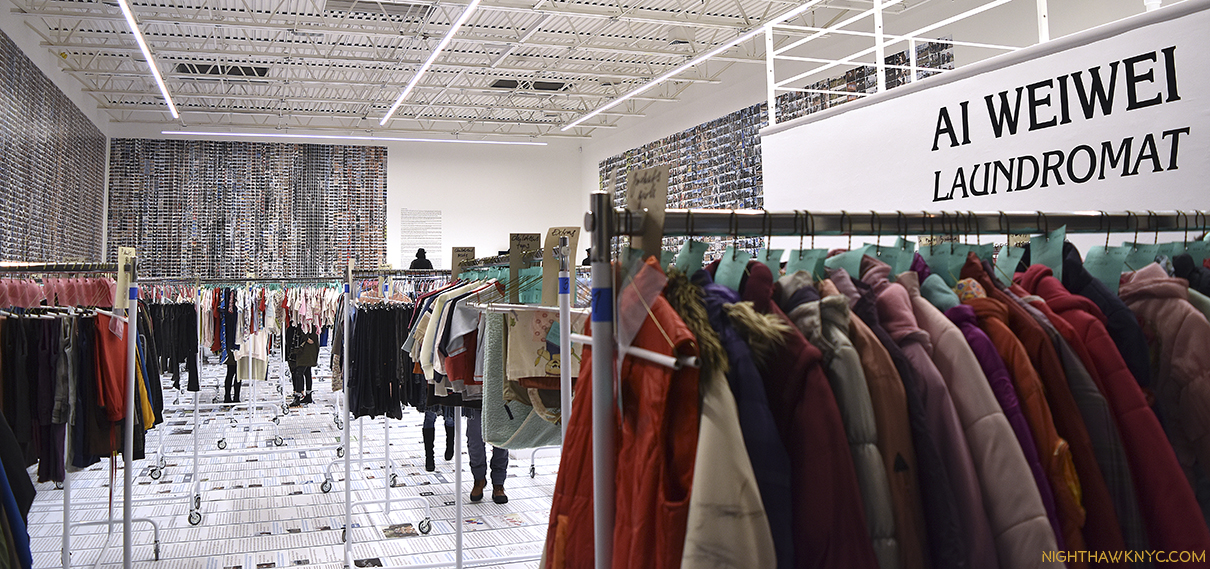
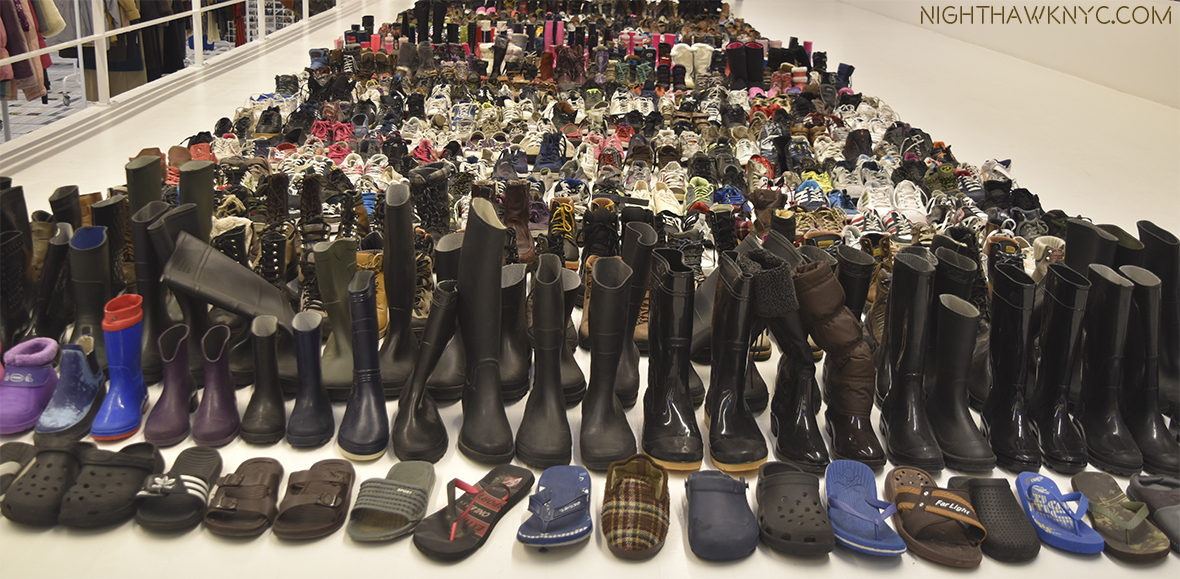
Ai Weiwei said-
“When we started filming in Idomeni, the first thing we noticed was people trying to change their clothes. These are the clothes they wore from Syria, wet and soiled from the difficult journey across the ocean, over mountains and through woods. They had no chance to wash their clothes until they were forced to stop in Idomeni. They would hand wash the clothes and throw it on the border fence to dry. There was nowhere else to hang dry their laundry. We photographed the clothes, but we did not, and could not, imagine they could later be included in an exhibition. The clothes were some of the few possessions they could take when they decided to leave their homes. There is not much else they could take. Off the coast of Lesbos, I found an abandoned boat drifting in the sea. Inside, I found a copy of the Bible and a baby’s bottle. You would also find small objects wash up on the shore. These objects were the most precious things a person could have, the last things they brought with them as they sought a new life.”
“Once the refugees were forced to evacuate to different camps from Idomeni, many of those possessions were left behind. Trucks came in and loaded these items up to take towards the landfill. I decided to see if we could buy or collect them so they would not be destroyed. Previously, my studio collected many life jackets from the local officials in Lesbos and made an installation with them at the Berlin Konzerthaus. My team negotiated with local officials who agreed to let us have the collected material. They were aware of our presence and were supportive. With a truckload of those materials, including thousands of blankets, clothes and shoes, all impossibly dirty, we transported them to my studio in Berlin. There, we carefully washed the clothes and shoes, piece by piece. Each article of clothing was washed, dried, ironed, and then recorded. Our work was the same as that of a laundromat.”1
While Downtown New Yorkers are no strangers to acts of war and terrorism, catastrophic weather or blackouts2, one of the strange things about living through those events, for me, was that many people in other parts of the City, who were directly unaffected by them, lived in a certain level of oblivion about them. Many seemed completely disconnected from what was going on right in their own City. It can be easy to understand when you look at this, from the Hurricane Sandy blackout, which effected me, and all of downtown New York for 5 days to 2 weeks. Now? At “Laundromat,” I was the “directly unaffected,” I had never heard of Idomeni, Greece, and knew little about the Syrian Civil War that’s led to 13.6 million refugees3 seeking to rebuild their lives elsewhere. That’s equal to the population of London. During my 5 visits to it was easy to say now what others may have said about the Sandy Blackout- life gets to be so all-encompassing that few of us really know what’s going on in much of the City, let alone the rest of the world. It’s different when it’s personal.
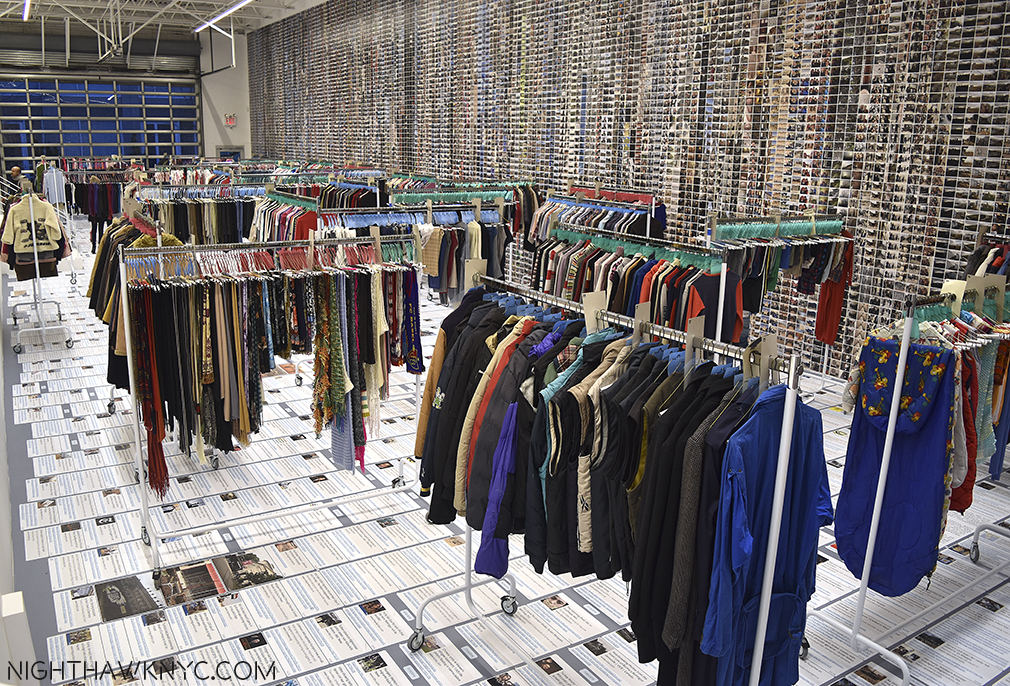
I’m sure there are those who walked in and thought “This is Art? It looks like the Salvation Army.” I know what they mean. But? Yes, I consider this to be Art, and I consider it to be groundbreaking Art. Laundromat’s range of expression is formidable. Ai Weiwei is the master Artist of the electronic information age. Recently named “The Most Influential Photographer of the Past 10 Years” by complex.com (Cindy Sherman placed 13th, Annie Liebovitz 8th, and Sebastio Salgado didn’t place.? Yet, another reason I don’t believe in qualitatively comparing Artists.). Weiwei’s Blog was, perhaps, the first “essential” Blog of the 2000’s, before it was forcibly removed. Part of it has been translated and published and is still in print.4 Mr. Ai became the first Artist to have photographs “go viral” with his now infamous shot in the elevator with police after his arrest in 2009. Now, he has combined mediums (thousands of photographs, an excerpt from his upcoming documentary film and hundreds of internet articles and social media postings), with actual objects- the clothes and shoes left by the refugees in the camp. The clothes hang on racks. Washed, ironed and/or cleaned, they are “ready-to-wear,” tagged by hand and sorted by type, sex and age, near hundreds of shoes aligned in neat rows on the floor- about an equal number of matching pairs and singles. The shoes are of every kind imaginable, except high heels. (I saw only one pair with a very low heel.) Boots, low boots, sneakers dominate. I assume because their owner’s felt they were finished with crossing wet terrains or bodies of water. Both are present in mute witness to what they have seen and experienced.
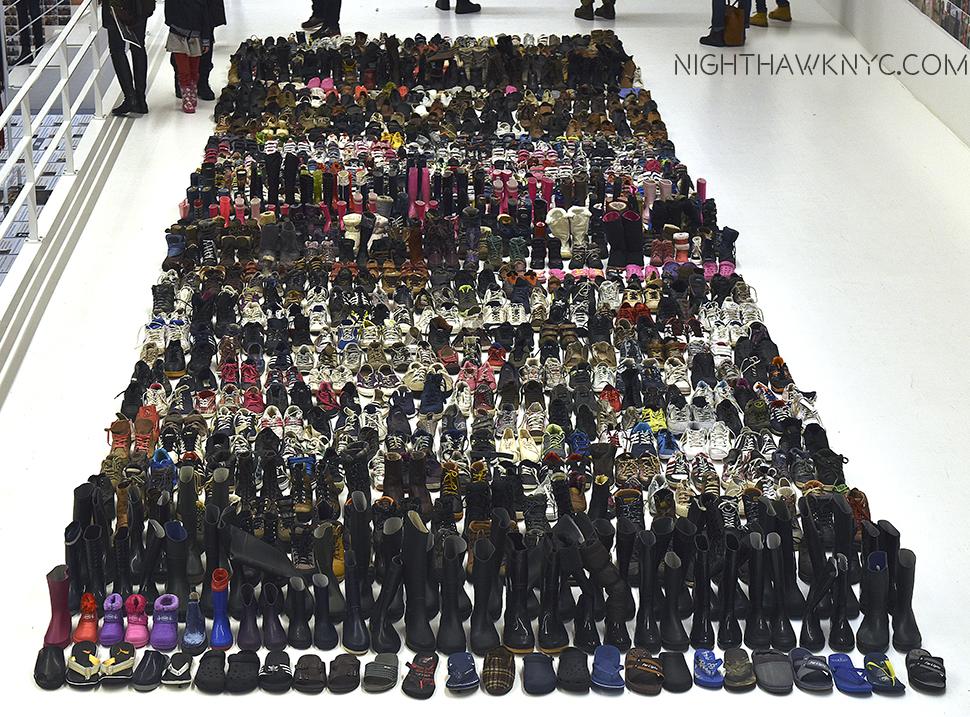 What their wearers have experienced can never be washed away that easily. Many are, no doubt, still going through the experience of being a refugee and seeking an answer.
What their wearers have experienced can never be washed away that easily. Many are, no doubt, still going through the experience of being a refugee and seeking an answer.
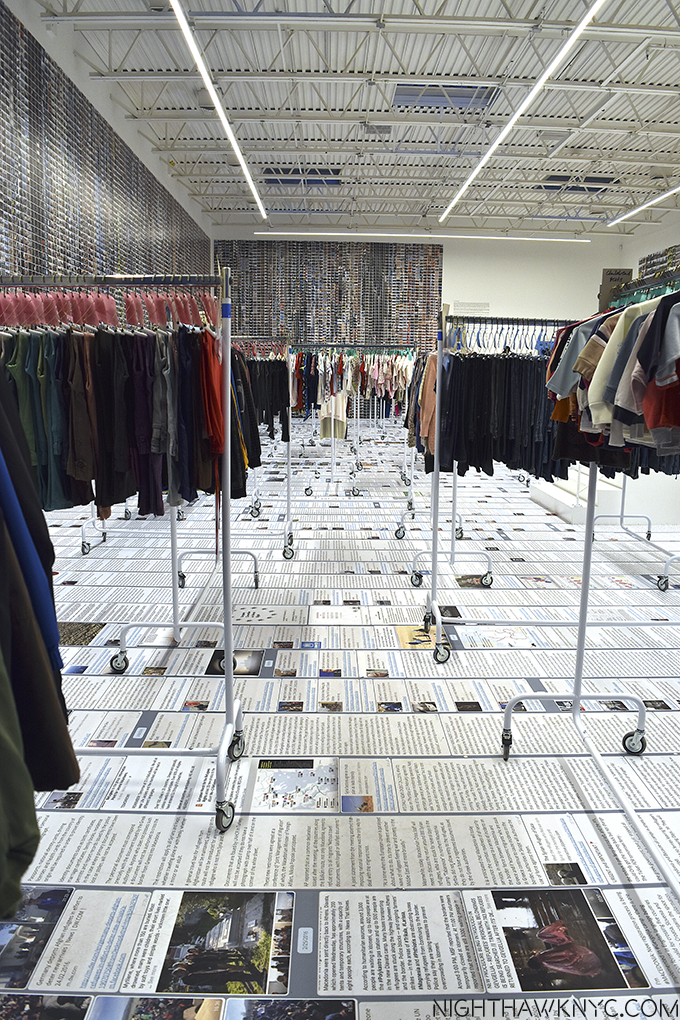
A Sea of Words. Hundreds of news and web postings seen in the “Newsfeed” section of the show, which fills the floor beneath visitor’s feet.
Laundromat is a deeply personal show for Ai Weiwei. On a number of levels. First, he seems to just naturally respond to humans in crisis, all over the world, be they individuals in the case of the Feminist Activist Ye Haiyan, as we saw in Brooklyn, in Ye Haiyan’s Belongings, in 2013 (which recreated that photo verbatim, installing all of her belongings in a gallery in the Brooklyn Museum(!), something of a possibly precursor to this show), or his powerful documentary Stay Home, about the Aids activist Liu Ximei, or by trying to put names and identity to the countless thousands lost in the 2008 Sichuan Earthquake, the subject of Backpack pieces Remembering, 2009, installed in Germany, and “Snake Ceiling” (seen in Brooklyn) as well as the monumental work Straight, 2008-12, which consists of 40 tons of rebar from the Sichuan quake that Ai recovered and straightened, It was powerfully displayed alongside the list-turned-wall paper, Names of the Student Earthquake Victims Found by the Citizen’s Investigation, 2008-11, in Brooklyn, photos of which I posted here. The amount of work he, his staff and volunteers put in to try and identify the dead children was nothing less than monumental. Laundromat is only the latest “piece” in Ai’s ongoing “work” regarding human rights. It, too, is monumental, in more ways than one.
I’m left to wonder- If he didn’t do this, who would? Would anyone?

First learning about this refugee crisis in 2015, after being freed from jail, but still unable to leave China, he dispatched two members of his staff to go see the camps and interview refugees. Once he got his passport back, he travelled to Germany, where he could get a much closer look at what was going on. Then he decided to go to Idomeni, and document it. “Laundromat” is the first result of those efforts. The documentary film, Human Flow, is next, scheduled to be released in 2017.
The second level of this being personal for Ai Weiwei is that he, himself, lived in exile for TWENTY YEARS! And? They began when he was an infant, in 1957.
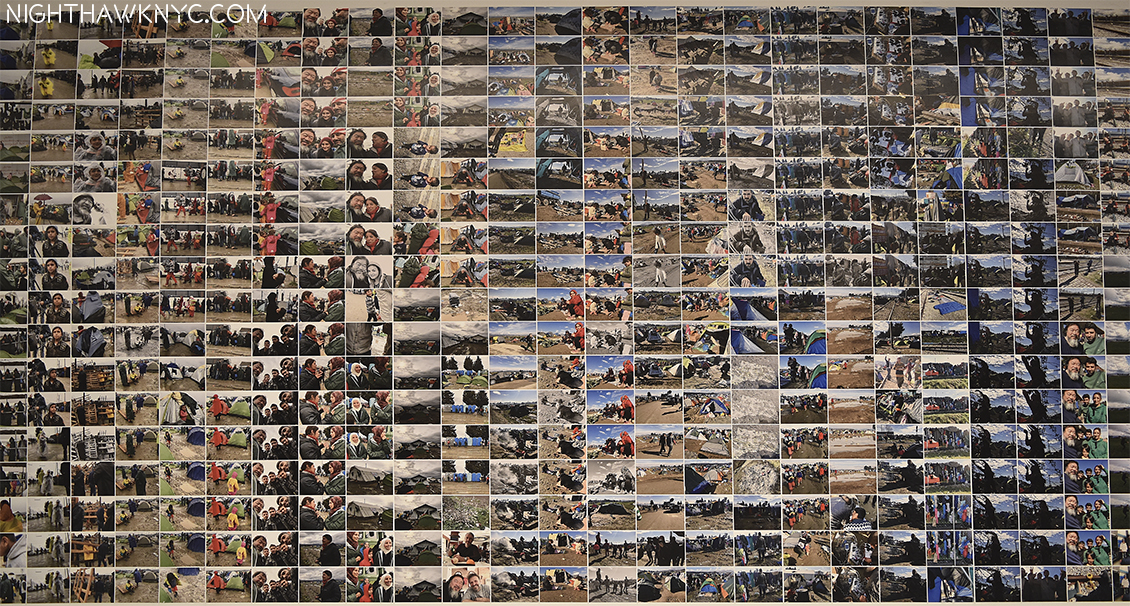
He says-
“When I was born, my father (the great poet and intellectual), Ai Qing, was denounced as a ‘rightist’ and was criticized as an enemy of the party and the people. We were sent to a labour camp in a remote region far away from our home and so began 20 years in hard exile, which saw my father clean bathrooms and the family live in an earthen pit5.” This was after Ai Qing had been a friend of Chairman Mao (Ai Weiwei has spoken about handwritten letters from Mao being in their home), and had served as a representative of the Chinese government. “We carried almost nothing with us to the camp, only trying to survive. It was an extremely difficult time being seen as a foreigner in your own nation, an enemy of your own people, an enemy of those my father loved most. I know what it is like to be viewed as a pariah, as sub-human, as a threat and danger to society.”1. When the exile ended in 1976, and Ai Qing and his family returned to Beijing, many of his father’s readers had assumed he had died. Before he was all that he is today, Ai Weiwei grew up a refugee.
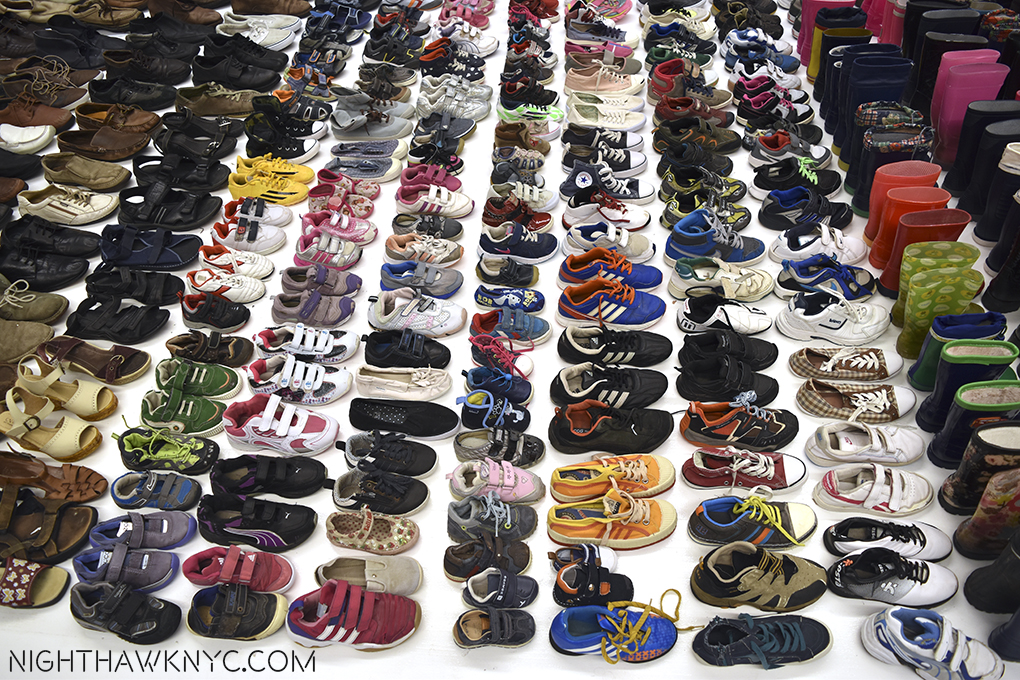 Now, he has turned the latest refugee crisis, coming after what the New York Times called “The Century of Refugees,” into a work of Art, giving voices to all of those who have not been heard. It’s impossible to walk through these clothes and shoes and not feel their presence- that there was a person for every single article here- especially the babies. Though cleaned, evidence of personal wear remains that is permanent, along with what is permanent, though now invisible- the experiences each of these items, and the person wearing them went through. You wonder “Did someone really make this trip wearing thong sandals?” You see many well-known famous brand names, like Adidas, famous images and icons, as well, including “Hello, Kitty,” even “Barbie.”
Now, he has turned the latest refugee crisis, coming after what the New York Times called “The Century of Refugees,” into a work of Art, giving voices to all of those who have not been heard. It’s impossible to walk through these clothes and shoes and not feel their presence- that there was a person for every single article here- especially the babies. Though cleaned, evidence of personal wear remains that is permanent, along with what is permanent, though now invisible- the experiences each of these items, and the person wearing them went through. You wonder “Did someone really make this trip wearing thong sandals?” You see many well-known famous brand names, like Adidas, famous images and icons, as well, including “Hello, Kitty,” even “Barbie.”
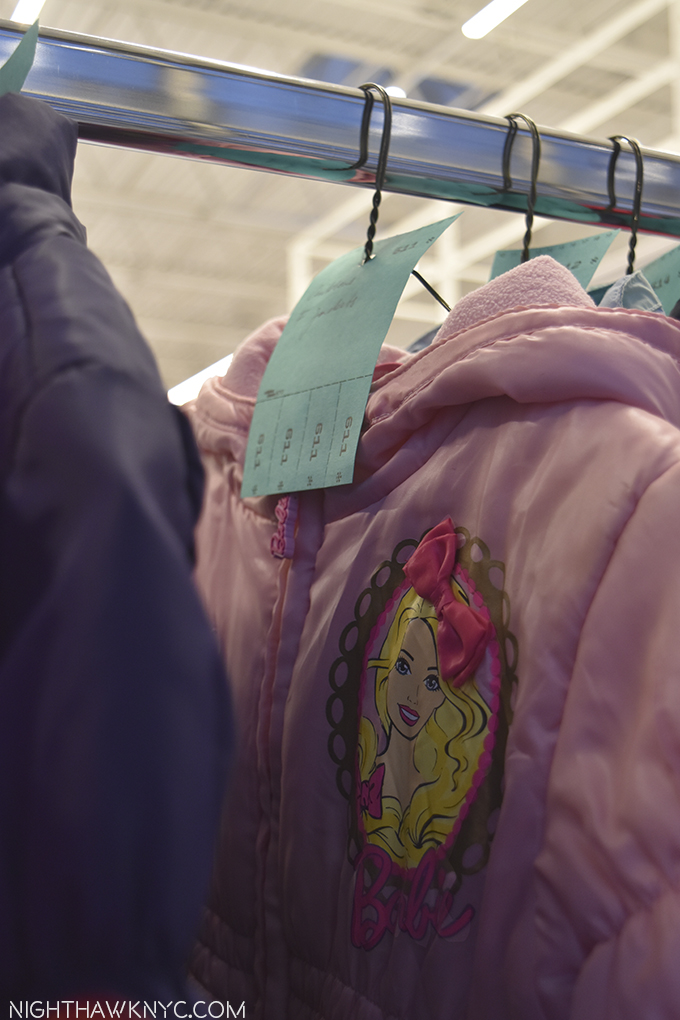 The clothes look like clothes you could see being sold right down the street, though many of the labels are unfamiliar (a classic way New Yorkers identify tourists), yet so much of what’s here is so common- everywhere in the commercialized world. and not all that different from the jeans t-shirt, sneakers and jacket I’m wearing standing among them. Though, of course, it’s very hard to consider the Idomeni Camp part of the “civilized world,” especially when you read accounts of it, like this one from International Women’s Rights Journalist, Jina Moore.
The clothes look like clothes you could see being sold right down the street, though many of the labels are unfamiliar (a classic way New Yorkers identify tourists), yet so much of what’s here is so common- everywhere in the commercialized world. and not all that different from the jeans t-shirt, sneakers and jacket I’m wearing standing among them. Though, of course, it’s very hard to consider the Idomeni Camp part of the “civilized world,” especially when you read accounts of it, like this one from International Women’s Rights Journalist, Jina Moore.
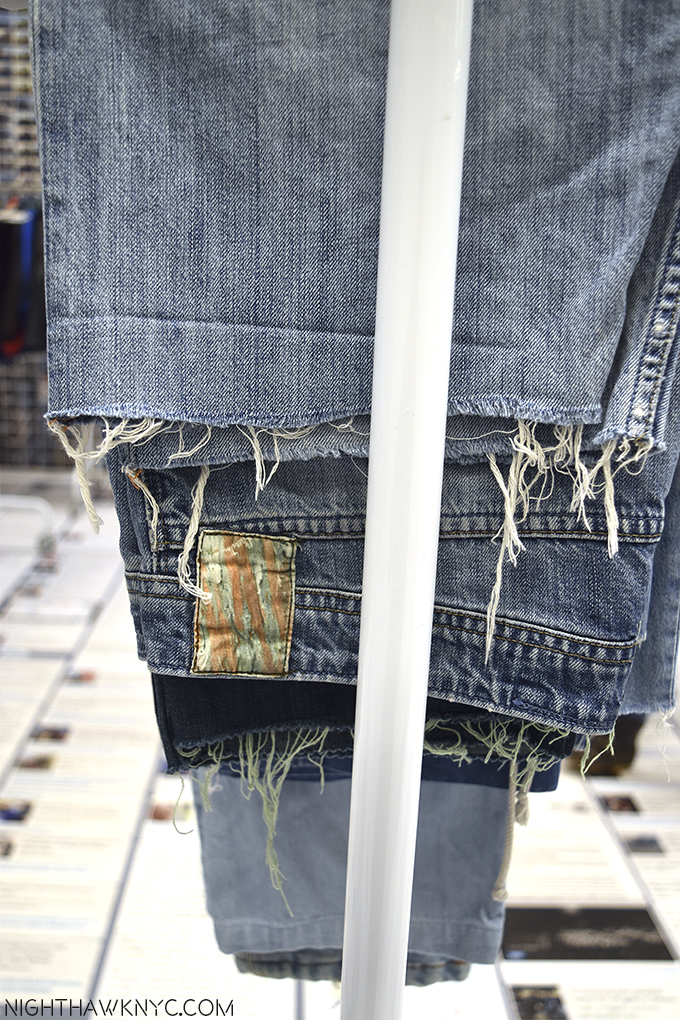 What are you going to wear if your house catches fire and burns, or, you have to leave town, or state, or country…in a real emergency, or war?
What are you going to wear if your house catches fire and burns, or, you have to leave town, or state, or country…in a real emergency, or war?
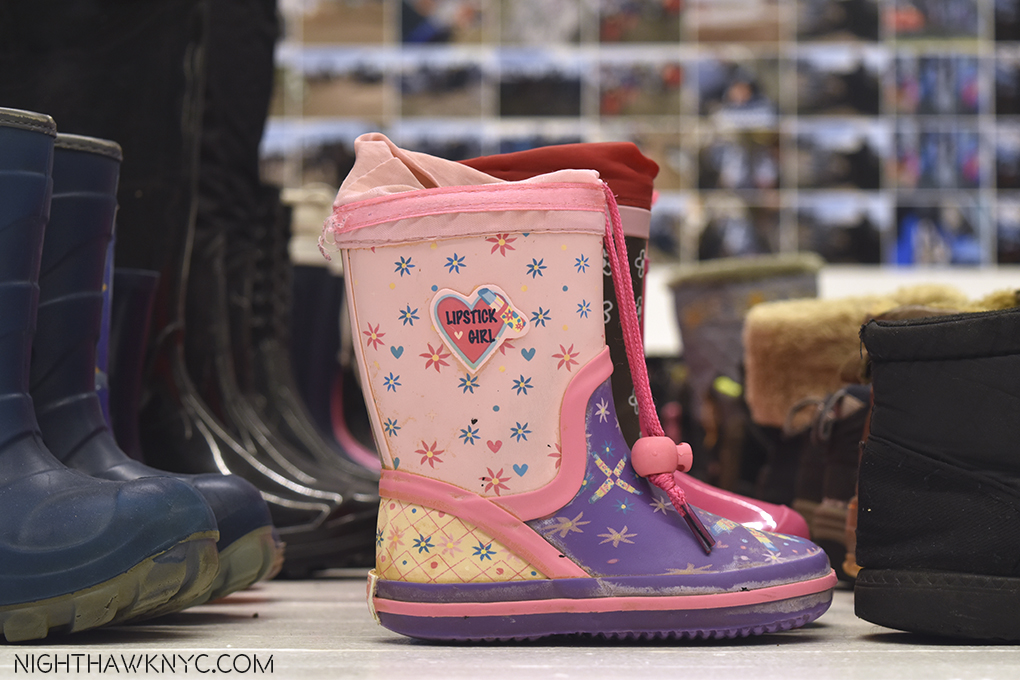 A story could be told for each item here. Mr. Ai could have made a show with one item, and it would have been quite powerful, but it wouldn’t have been this show. As you walk among the clothes, or around the shoes, look at the thousands of photos on three of the 4 walls, and the hundreds of internet articles and posts on the floor beneath your feet, it is easy to become numb to the numbers, but the little bits of individuality each item retains reminds you of a more finite realm of experience. This is a group made up of people. Of individuals, like you, and me. 1+1+1+…= 18,000.
A story could be told for each item here. Mr. Ai could have made a show with one item, and it would have been quite powerful, but it wouldn’t have been this show. As you walk among the clothes, or around the shoes, look at the thousands of photos on three of the 4 walls, and the hundreds of internet articles and posts on the floor beneath your feet, it is easy to become numb to the numbers, but the little bits of individuality each item retains reminds you of a more finite realm of experience. This is a group made up of people. Of individuals, like you, and me. 1+1+1+…= 18,000.
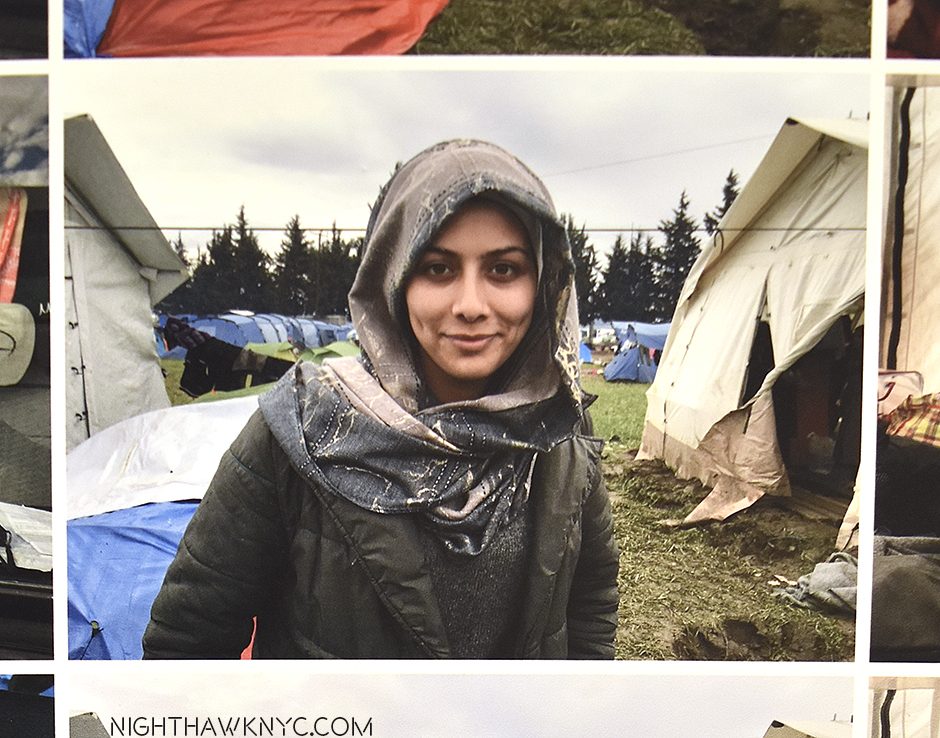
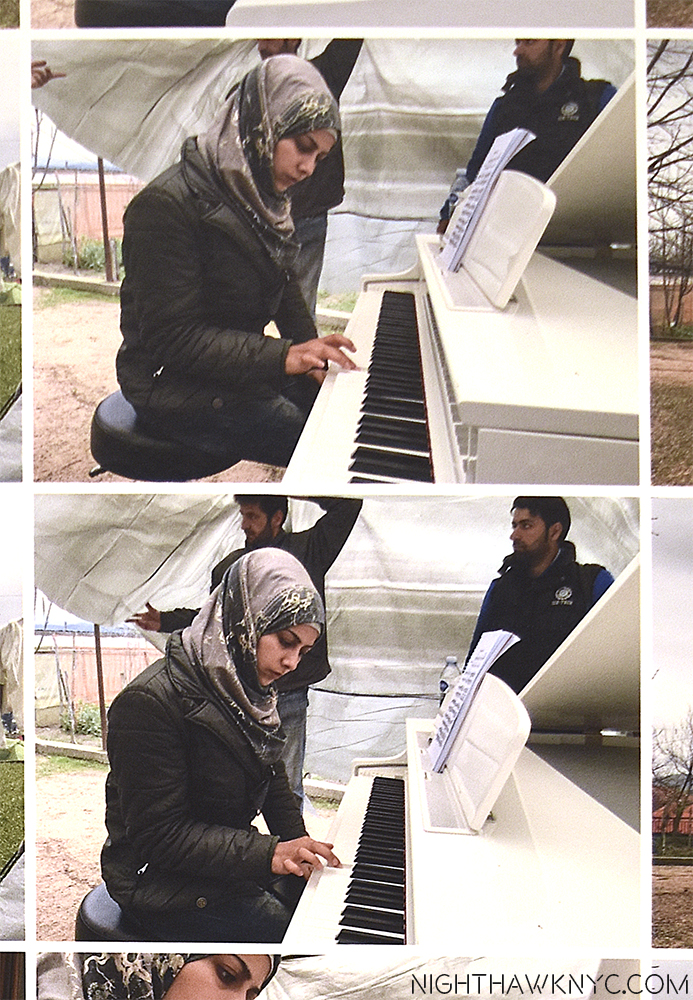
In the midst of ALL of this, the sea of humanity (not to mention the actual Seas surrounding Greece they crossed), the incredible hardships, suffering and deaths, there was one small part of this story, and this show, I found particularly interesting & revealing, though nothing about it is mentioned in the show itself! I only learned about it through doing my research. Ai Weiwei came across a 24 year old Syrian refugee named Nour Al Khzam, who’s photo I spotted (above) among the thousands on the walls, who is from Deirez Zor, Syria. She was trying to get to Germany to reunite with her husband. Before fleeing Syria she had been studying piano. Ai Weiwei arranged for a piano to be brought to the Idomei Camp so she could play it, as seen in the photos immediately above. I know he’ll be criticized for doing this, but I find it poignent because it speaks to a number of important things, including- going on with your life and realizing your creativity, even after being a refugee (which Ai Weiwei, himself did). It also speaks to something very important- What is the value of one refugee? How many great Artists, maybe an Ai Weiwei, great Scientists, or great people are among these refugees?
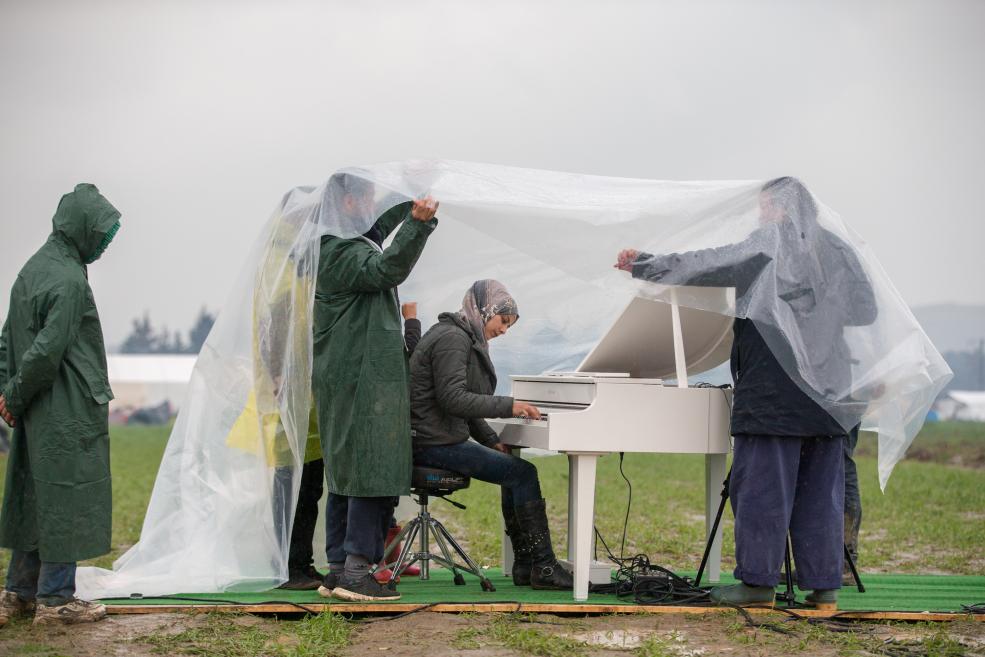
This image, above (Photo by Matt Cardy/Getty Images) of Ai Weiwei, right, helping to hold a plastic sheet while Ms. Al Khzam’s plays in the rain that day is of particular importance, as we shall see next time. (Note- This photo was not included in the show.)
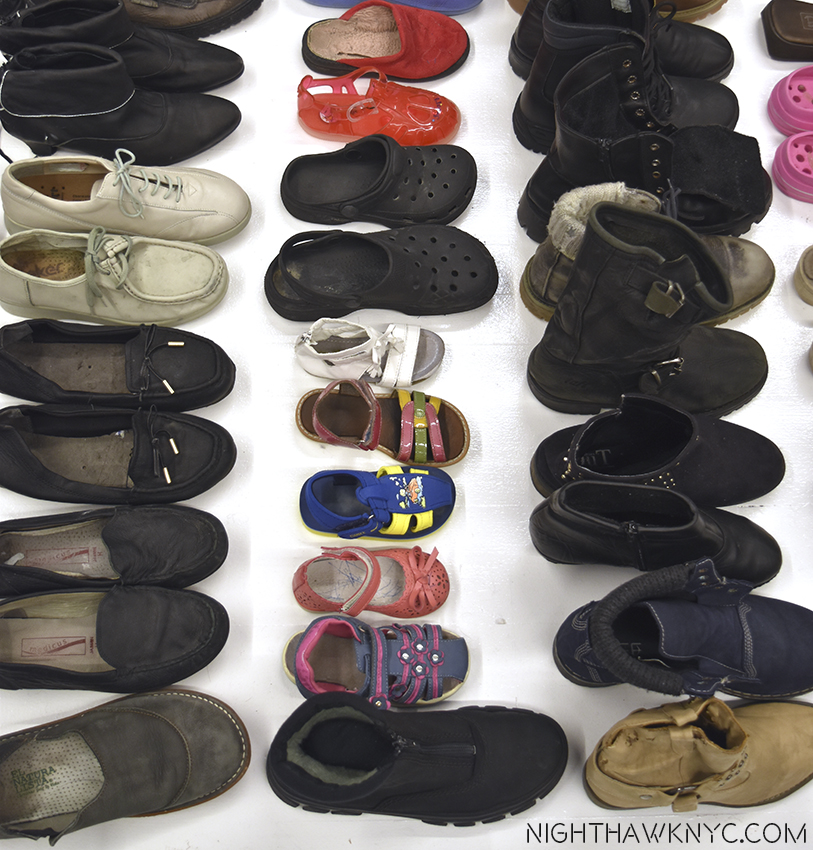 Though Idomeni is half a world away, there was a beautiful piece of New York City included in this show. Among the materials handed out at Deitch was a sheet containing September on Jessore Road, by “New York’s Poet,” as Ai Weiwei calls his friend, Allen Ginsberg, written after Ginsberg had visited the Bangladeshi refugee camps in 1971. Allen Ginsberg had come to know Ai Qing during a trip to Beijing. And with it, AWW adds poetry to the list of mediums included in this show.
Though Idomeni is half a world away, there was a beautiful piece of New York City included in this show. Among the materials handed out at Deitch was a sheet containing September on Jessore Road, by “New York’s Poet,” as Ai Weiwei calls his friend, Allen Ginsberg, written after Ginsberg had visited the Bangladeshi refugee camps in 1971. Allen Ginsberg had come to know Ai Qing during a trip to Beijing. And with it, AWW adds poetry to the list of mediums included in this show.
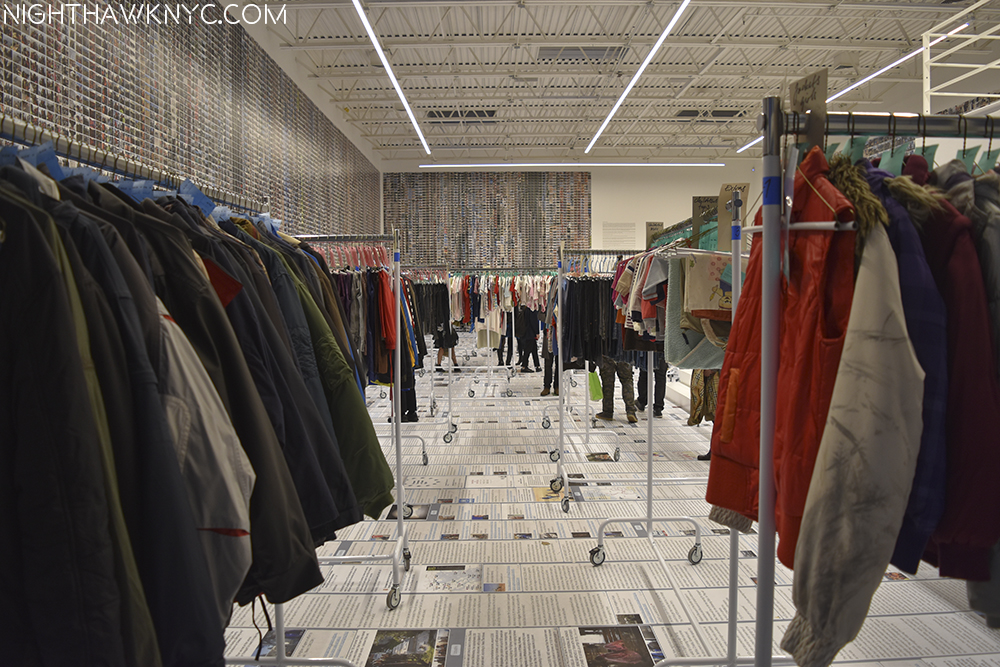 Having lived through a few events that might have made me a refugee (the Hurricane Sandy blackout left me without means of getting off of Manhattan, except on foot), the inescapable feeling of Laundromat was “There, but by grace, go I.” If anything defines the 20th Century as much as the airplane, space flight, electricity and the atomic bomb, it’s the refugee. More of them were created in one century than at any time in world history.
Having lived through a few events that might have made me a refugee (the Hurricane Sandy blackout left me without means of getting off of Manhattan, except on foot), the inescapable feeling of Laundromat was “There, but by grace, go I.” If anything defines the 20th Century as much as the airplane, space flight, electricity and the atomic bomb, it’s the refugee. More of them were created in one century than at any time in world history.
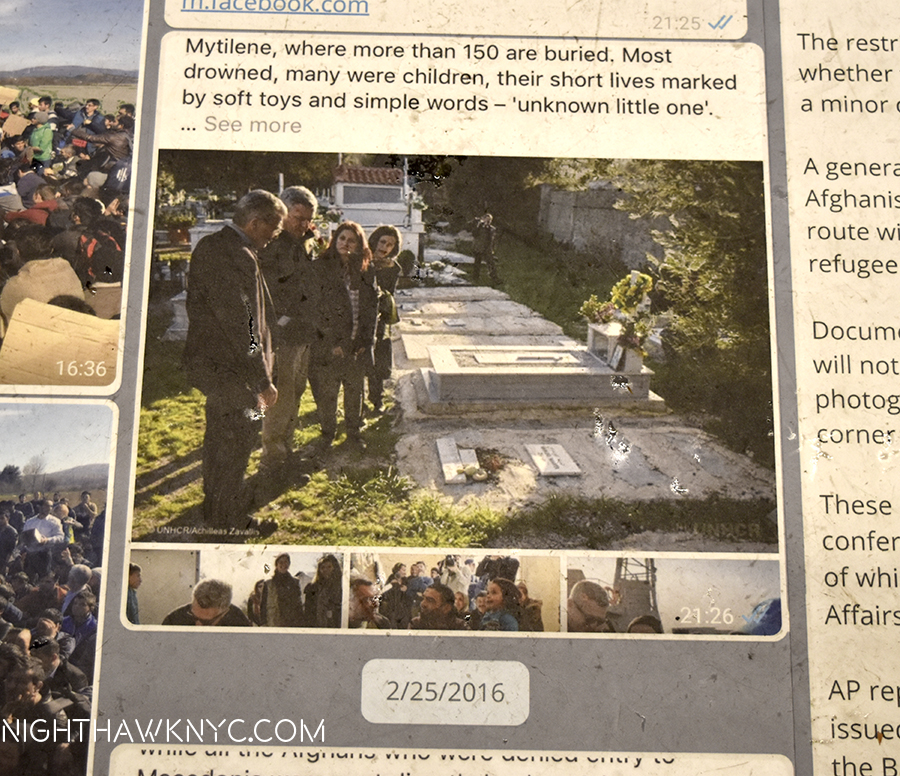 “I cannot give them food or tea, or money, but rather I can let their voices be heard and recognized. I can give them a platform to be acknowledged, to testify that they are human beings. During the saddest moments in our history, mankind has had to prove their worth as humans to their own kind. Unfortunately, this has proven to be the most difficult task. As an artist, this is something I would like to take on1.”
“I cannot give them food or tea, or money, but rather I can let their voices be heard and recognized. I can give them a platform to be acknowledged, to testify that they are human beings. During the saddest moments in our history, mankind has had to prove their worth as humans to their own kind. Unfortunately, this has proven to be the most difficult task. As an artist, this is something I would like to take on1.”
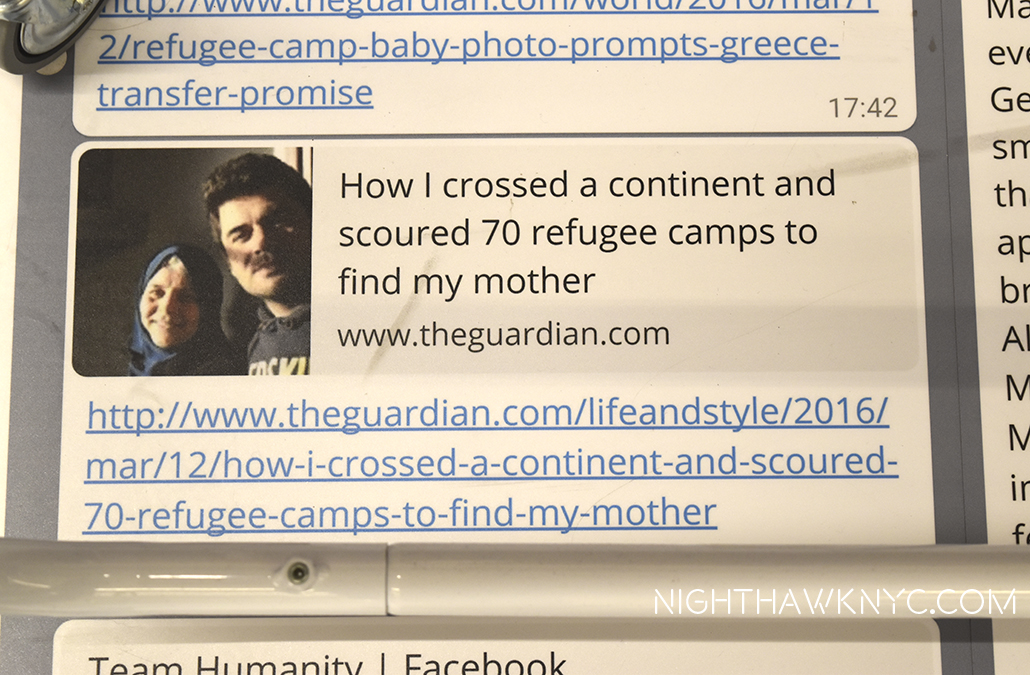 Ai Weiwei reminds us here that in this new millennium we have yet to find a way to deal with this world wide question.
Ai Weiwei reminds us here that in this new millennium we have yet to find a way to deal with this world wide question.
“He wants to see how far an individual’s power can go,” Chen Danquing, a Chinese painter and social critic said in the Nw Yorker’s profile of Ai Weiwei in 20108. Ai Weiwei doesn’t help all of people directly, as he said, that’s not within his means. Yet he, in the way he lives his life, and in his work, stands for freedom- Artistic freedom and human rights. He, and his work, continually remind us of the primacy of human rights in ways that are unique, powerful and unforgettable. As for an “individual’s power?” The more of his work I see, the more I read his words, and the more I see of his compassion and soul, I’ve come to believe that Ai Weiwei is one of the most important human beings of our time. He has become something of the “conscience” of the Art world. If not the world, itself.
As big a statement as that is, even beyond it, no one can leave this show without remembering that here is a man who has accomplished so very much in the world after he, himself, lived in exile as a refugee in his own country for 20 years (not to mention everything else he has had to overcome). Though he wasn’t able to help them all financially, etc. I think he understated the impact he may have had on them.
As much as every item in Laundromat speaks for those with no voice, Ai Weiwei, the man, is living proof a refugee can survive, overcome, and make a lasting mark on the world. I have a feeling his mere presence in Idomeni served to remind at least some of those he encountered of that, and possibly gave them hope. How do you put a value on that? Of course he chose to avoid mention of any such thing when he commented on what he could and couldn’t do for them.
I don’t have to.
*-Soundtrack for this Post is “The Unknown,” by Acrassicauda, a heavy-metal band from Baghdad, themselves exiled by the Iraqi War, and the subject of the documentary Heavy Metal in Baghdad. I had the honor to meet and hang out with Tony Aziz, their lead guitarist, in 2011, shortly after the band finally made it to the United States. Talk about overcoming, and continuing to follow your dream…
(PS- Oh yeah…I still have THREE more Ai Weiwei shows to see…)
NighthawkNYC.com has been entirely self-funded and ad-free for over 7 years, during which over 275 full length pieces have been published. If you’ve found it worthwhile, PLEASE donate to keep it up & ad-free below. Thank you!
Or-
I’M PLEASED TO ANNOUNCE I’M CURATING A SELECTION OF ART, ARTBOOKS & PHOTOBOOKS FOR SALE! All items are from my collection or specially selected in my travels through the Art world for my readers. The initial selection of over 400 items is here. Either way, all proceed go to support the site. With my thanks.
Written & photographed by Kenn Sava for nighthawknyc.com unless otherwise credited.
To send comments, thoughts, feedback or propositions click here.
Click the white box on the upper right for the archives or to search them.
For “short takes” and additional pictures, follow @nighthawk_nyc on Instagram.
Subscribe to be notified of new Posts below. Your information will be used for no other purpose.
- Deitch Projects Interview, 2016. ↩
- Hurricane Sandy caused a partial evacuation ↩
- According to the UN., 6.4 million have fled the country. An additional 7.2 million are displaced within Syria. ↩
- It may be the most essential book on Ai Weiwei, along with the Taschen monograph, which, though published in April, 2016, is already slightly dated as his career continually evolves. Perhaps the best way to stay current with Ai Weiwei is on his Instagram page. But, be forewarned- he almost never captions his photos there, like he does not for the thousands of them in this show. ↩
- Ai Weiwei’s Blog, P.53 ↩
- Deitch Projects Interview, 2016. ↩
- Deitch Projects Interview, 2016. ↩
- May 24, 2010 ↩

